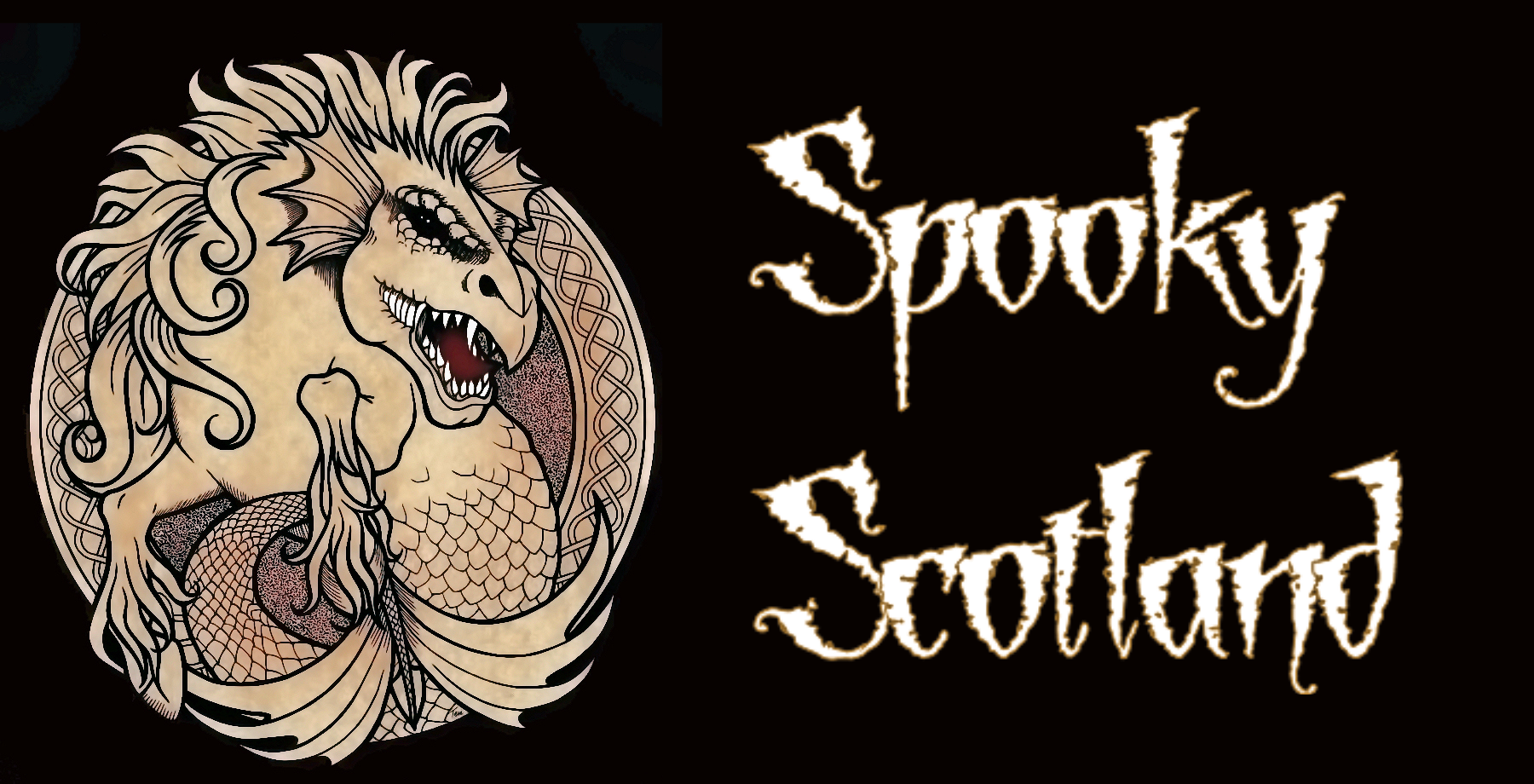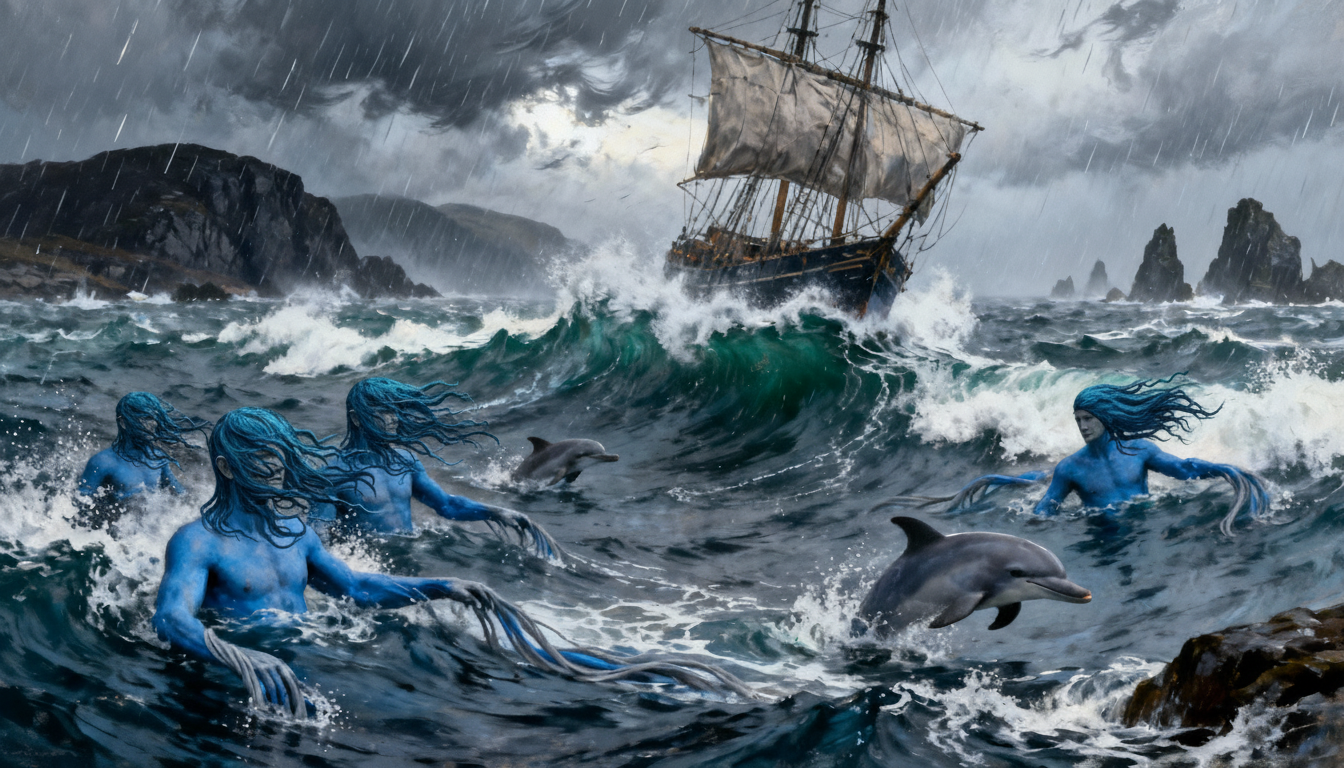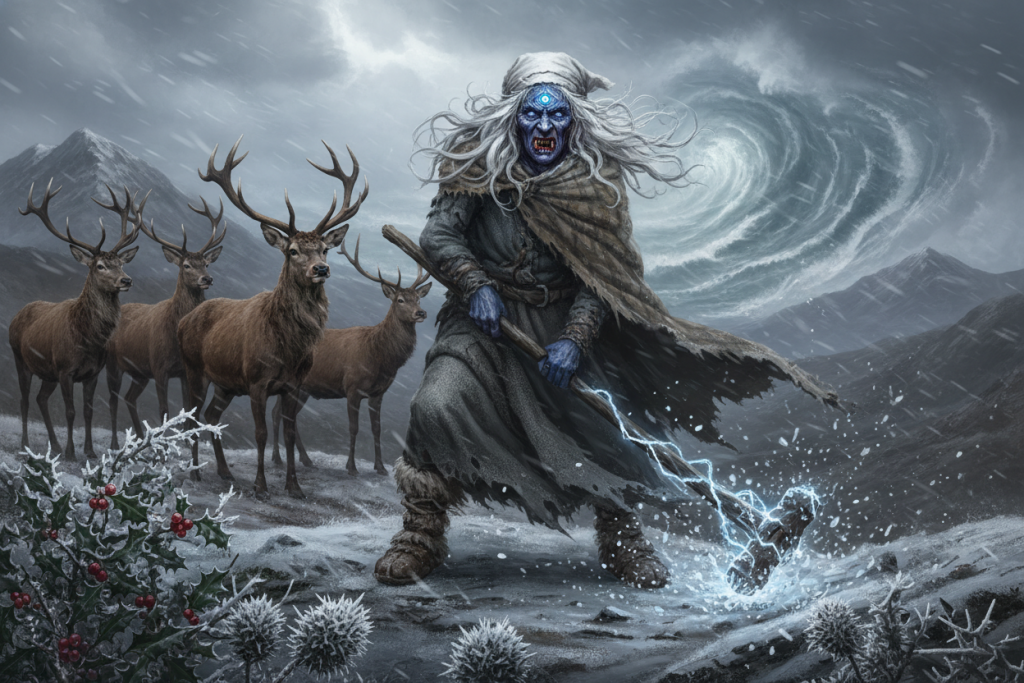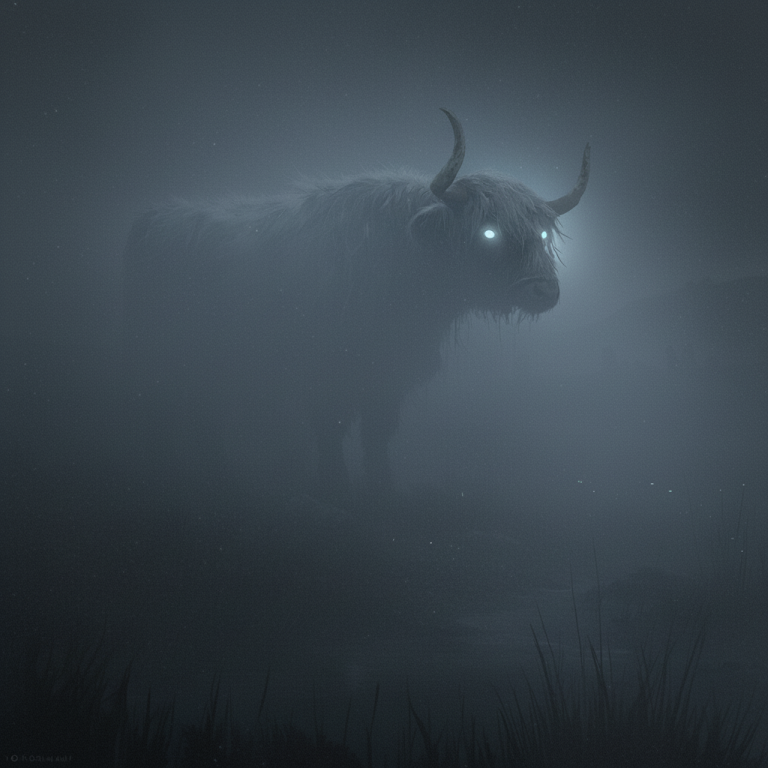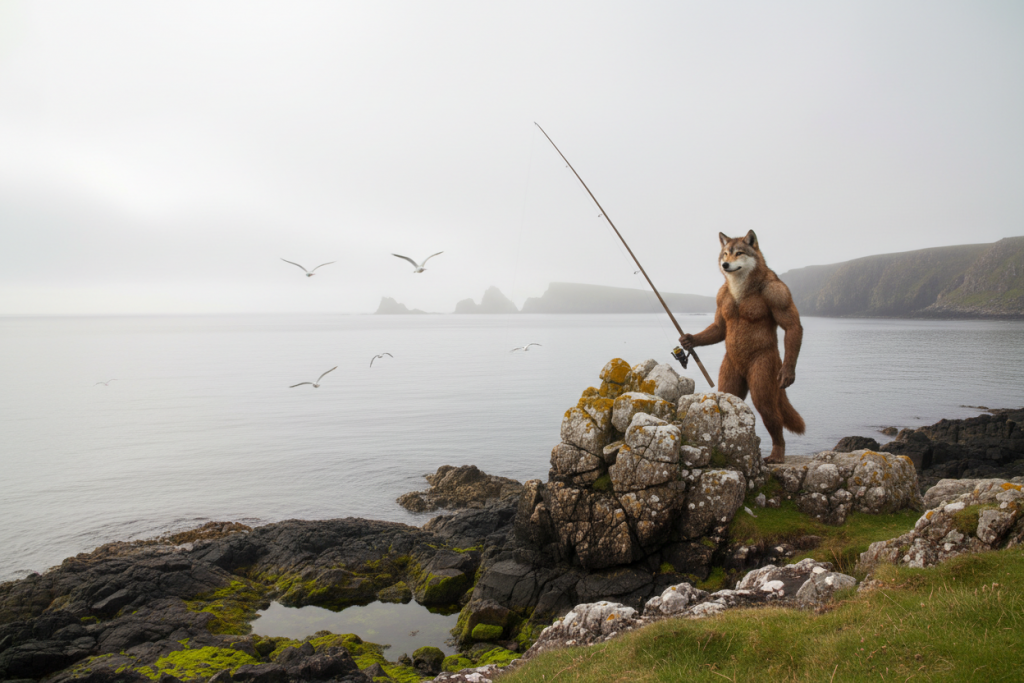General Information:
The Blue Men of the Minch are water-dwelling spirits said to inhabit the strait between the Isle of Lewis and the Shiant Isles, in the Minch. They are human-sized, strong, and fearsome during storms. They are known for challenging ship captains to complete rhyming verses. If the captain fails, they attempt to sink the vessel. Their stream was once called the Current of Destruction because so many ships were lost there.
Appearance:
The Blue Men of The Minch look much like humans but are blue in colour. Accounts describe grey, long faces, sometimes long grey arms, blue caps, and in some tellings green-white beards. They swim with torsos raised above the water, twisting and diving like porpoises. In calm weather, they may float sleeping on or just below the surface.
Habitat:
They are found only in the Minch, especially around the Shiant Isles between Lewis and the Shant/Shiant Islands. Folklore places their caves on the sea floor beside the Shiant Isles, where tides race in all weathers. Locals avoided the shortcut through the strait and sailed around the isles instead.
Behaviour:
They revel in bad weather and can raise waves with their long, restless arms. In summer, they skim below the surface. When the wind is high they swim breast-high, faces grey above the foam, splashing with delight. They speak to sailors and laugh as spray drenches the decks. Some tales say they can summon storms. On clear nights they play shinty for sport.
Shape-shifting Ability:
They are not known for changing into other forms. Most accounts present them as human-like blue swimmers. A few rare versions mention wings, but shape-shifting is not a core trait.
Variant:
They are sometimes grouped with kelpies and called Storm Kelpies. Unlike horse-shaped kelpies found elsewhere, these beings are human-like and confined to one area. They have no close counterparts in other parts of Scotland.
Location in Scotland:
The Minch, the strait between mainland Scotland and the northern Outer Hebrides. Most closely tied to the waters between the Isle of Lewis and the Shiant Isles, in a stretch known as the Sea-stream of the Blue Men.
Stories/ Sightings or Experiences:
The Boatman’s Song
Sailors along the Minch kept a work song that doubled as a warning. It describes how the sea can look calm while the stream around the Shiant Isles still churns. When the tide turns and the wind lies down, the Blue Men keep the water moving with their long arms. In summer light they skim just below the surface like salmon. You can see shoulders gleam and fingers flash between ripples. In rough weather they rise breast-high, grey faces bright with foam, and shout over the gale. The song says they bellow across the billows and wail on the wind.
Crews took the words seriously because they matched what men swore they had seen. The refrain also hints at their relentlessness. “The whole day long, the whole night long” the Blue Men splash round the isles. Fishermen said the spirits shadowed boats through the channel and followed them into their dreams after landfall. The song’s purpose is clear. It sets the scene, lists their habits in calm and in storm, and reminds travellers that the stream never truly rests.
The Rap Battle in the Minch
One of the best-known tales explains the rule that protects a ship. A large, well-rigged vessel chose the short cut between Lewis and the Shiant Isles. The Blue Men’s sentinels sighted her and roused the rest from their caves. Their chief surfaced ahead of the bow, waist-high among the waves, and began the formal challenge. He called, “Man of the black cap, what do you say, as your proud ship cleaves the brine?”
The captain answered at once, as the tradition demands, “My speedy ship takes the shortest way, and I’ll follow you line by line.”
The chief then declared his intent: “My men are eager, my men are ready, to drag you below the waves.”
The captain matched the rhythm and meaning: “My ship is speedy, my ship is steady, if it sank it would wreck your caves.”
In this exchange, you can see the rules. The chief starts with two lines. The skipper must reply with two lines that rhyme and balance the sense. There is no time to think. Any pause counts as failure. Here the captain’s timing and craft unsettled the chief. The Blue Men could not touch the ship once the challenge had been met cleanly. The chief signalled a dive and the blue torsos slipped back under the ridges of water. The crew heard only the rigging sing as the wind filled the sails. This story is used to teach captains that quick wit and steady nerve are as important as seamanship in the Minch.
The Sleeping Sentinel
Another story shows both the strength of the Blue Men and the danger of pride. On a calm day, a crew crossed the stream with only a light breeze to help them. They found a Blue Man sleeping on the surface, as they sometimes do in fine weather. Hoping for a prize, the men hauled him into the boat and wrapped him in every coil of rope and spare chain. He did not wake. They turned for the nearest shore, whispering so as not to rouse him. Soon the sea began to lift and stir, though the wind had not changed. Two blue figures rose from clear water and swam hard for the boat.
One shouted, “Duncan will be one man.”
The other answered, “Farquhar will be two.”
Their voices woke the captive. He opened his eyes, snapped his bindings as if they were oat straw, and stood. He shouted back, “Ian Mhor has no need of help,” then sprang over the gunwale and was gone in one smooth dive.
The lesson is plain. The Blue Men are not simple beasts to be trapped, and they know each other by name. Calling across the water is both communication and a cue. Once the captive replied in verse, the exchange was complete and the capture failed. The fishermen told the tale as a warning against arrogance and as proof of the spirits’ power.
The Current of Destruction
Locals gave the narrows between Lewis and the Shiant Isles two names. One is the Sea-stream of the Blue Men. The other is the Current of Destruction. Both names point to the same idea. The channel is hazardous, and the Blue Men of the Minch are the face people give to that danger. To pass safely, a captain must observe an unwritten law. When the Blue Men of the Minch gather, the chief rises and recites the first couplet. The captain must reply with a matching couplet on the spot.
The content matters. The lines must rhyme, mirror the meaning, and show confidence. The speed also matters. Hesitation means surrender. If the captain replies well, the attack stops. Crews say the chop eases, the spray falls back, and the ship slides through. If he fails, the Blue Men close in. Torsos rise along the sides, long arms beat at the hull, and the vessel can be rolled or stove in. Because of this rule, skippers prepared verses the way they prepared sails, anchors, and charts. Some kept a few couplets ready for different moods of the sea. Others chose to avoid the channel entirely and take the longer run round the isles. The name Current of Destruction is not only about wrecks. It is also about the ritual that decides them.
Purpose of the myth or Legend:
- Cautionary tale about a dangerous strait and fast tides. It warns sailors to respect local waters and weather.
- Explains sudden storms and shipwrecks as the work of sea spirits rather than chance.
- Elevates the value of wit and readiness. A captain’s quick reply could secure safe passage.
- Possible cultural memory. Some suggest links to Picts in low boats, or to North African slaves held by Norsemen wintering near the Shiant Isles. Others see them as a personification of the sea itself.
